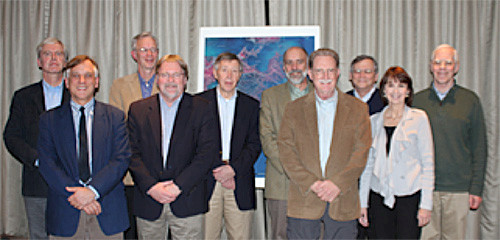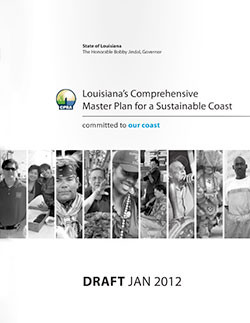Coastal Louisiana Master Plan released
Bill Dennison ·Coastal Louisiana has experienced considerable land loss over the past century due to relative sea level rise. This land loss has led to increased vulnerability to storm surges, as dramatically illustrated when storm surges from Hurricanes Katrina and Rita wrecked havoc on Louisiana in 2005. Immediately following the devastating 2005 hurricanes, the Integration and Application Network was asked to help contextualize the issues and provide graphical communication products. This was accomplished by a series of workshops which produced a three part series of newsletters entitled "Reducing flood damage in coastal Louisiana: Communities, culture & commerce", "Enhancing Landscape Integrity in Coastal Louisiana: Water, Sediment & Ecosystems", and "Restore vs. Retreat: Securing ecosystem services provided by coastal Louisiana", as well as contributing to the Coastal Louisiana Ecosystem Assessment and Restoration (CLEAR) website.
Louisiana has a process of developing a Master Plan for coastal protection and restoration activities at five year intervals. The last one was 2007 and the Coastal Protection and Restoration Authority (CPRA) has the task of producing the 2012 Master Plan. The 2007 plan was largely conceptual and qualitative, laying the foundation for developing an integrated approach. The 2012 Master Plan is more quantitative, with specific recommended actions developed through the use of ecological models and a planning tool for prioritizing actions.
In 2010, CPRA formed a review team called the Science and Engineering Board, and I was asked to serve as co-chair, along with Chip Groat from the University of Texas. We met four times as a group in various locations in Louisiana, with a last workshop scheduled for February 2012. It has been an interesting experience and the talented team of agency people and contractual groups have worked hard on the 2012 Master Plan and responded diligently to the Science and Engineering Board suggestions. At our last meeting in New Orleans, we were videotaped as we offered our opinions about the 2012 Master Plan process.

The 2012 Master Plan is now available for review (or PDF version) along with an extensive series of appendices on a specially built website. The website and the Master Plan document are examples of good science communication, and are worth a look. They are inviting comments and feedback on the Plan as well.
About the author
Bill Dennison

Dr. Bill Dennison is a Professor of Marine Science and Vice President for Science Application at the University of Maryland Center for Environmental Science.


